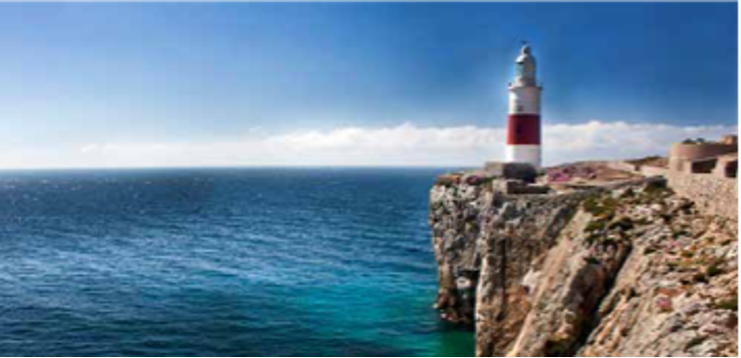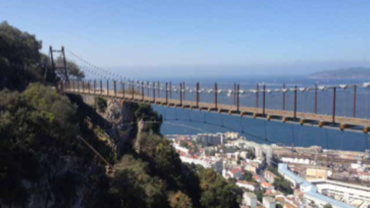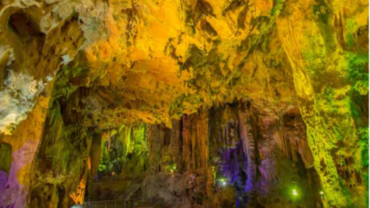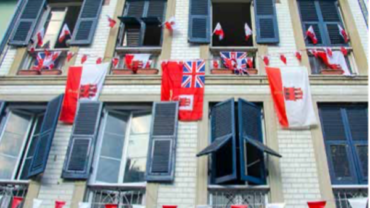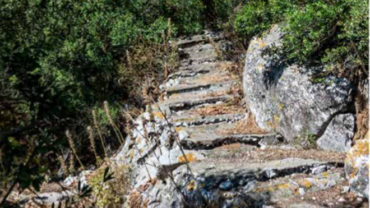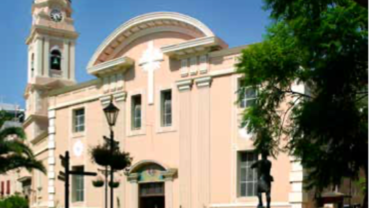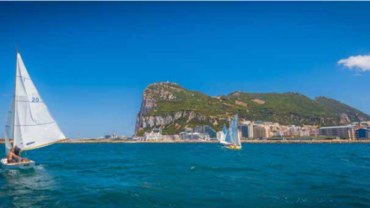Beaches in Gibraltar
Camp Bay & Little Bay
Camp Bay is a small rocky beach located at the south western end of Gibraltar, facing the Atlantic side of Gibraltar. It is very picturesque, with rocky cliffs as a back drop, the busy shipping area that is the Bay of Gibraltar and Parson’s Lodge Battery, an old British fortress overlooking the northern end of the bay. At the south end of the beach is a very beautiful, but un-natural waterfall exiting the cliff. This cascade is salt water returning to the sea from a water desalination plant.
The beach is a lido with two swimming pools for children and a popular bar restaurant. It is a popular beach for sun worshippers as it is south facing and being located away from the Rock itself, tends to escape any levanter clouds that may be shrouding the city centre. In addition, Camp Bay is home to what is claimed to be Europe’s first artificial reef. The reef was created by activists who were concerned at the scarcity of marine life. This has since created a haven for marine life and is a popular diving site.
At the south end of Camp Bay there is a smaller bathing area, appropriately called Little Bay, much smaller in size. Little Bay is a natural cove and also provides a little swimming pool for children.
Catalan Bay
Catalan Bay, known in Spanish as ‘La Caleta’, is a small bay and fishing village in Gibraltar on the eastern side of the Rock away from the main city. The true origin of the name of Catalan Bay is unknown, but a couple of theories exist: the first suggests that the bay is named after a group of around 350 Catalan (from Catalonia) military men believed to have settled here after having assisted the Anglo-Dutch forces who captured Gibraltar during the War of Spanish Succession on 4th August 1704.
However, no evidence exists to prove that Catalans settled in Catalan Bay and although this theory is regularly used as the supporting argument for the origin of the name, it is only a supposition that they ever did. The Spanish name ‘La Caleta’ (meaning small cove or bay) considerably pre-dates that of Catalan Bay. Therefore, since it has been called ‘La Caleta’ for much longer than it has ever been called Catalan Bay, the second theory and the most probably just in 1704 on the capture of Gibraltar by an Anglo-Dutch combined operation, that expedition landing in that place around 350 Catalan followers of Charles of Austria.
The third theory suggests quite simply, that the latter could simply be an English mispronunciation of ‘Caleta’. Historically, Catalan Bay had been populated by Genoese fishermen who were part of a much larger settlement pattern along the eastern coast of The Rock during the seventeenth and eighteenth centuries. In the eighteenth century Genoese was so widely spoken in Gibraltar that Government notices were also published in this language (alongside English and Spanish). Genoese was spoken in Catalan Bay well into the nineteenth century, dying out in the early decades of the twentieth century.
There has been some discussion that the British may have mixed up Catalans with Genoese but it is by no means clear why they should suffer such a confusion, especially since there is other evidence which demonstrates that the British were perfectly aware that the residents of Catalan Bay were Genoese: the orders for the siege of 1727 refer to this bay as the Genoese Cove and the numerous eighteenth and nineteenth century census record large numbers of people born in Genoa not in Catalonia.
During the nineteenth century only fishermen were permitted to live in Catalan Bay. They were required to have a fishing permit granted to them by the Governor and only a limited number of permits were issued. The families who live in the village today are mainly descendants of these Genoese fishermen and are colloquially known as ‘Caleteños’. Catalan Bay is home to the Caleta Hotel, a number of restaurants and the church of Our Lady of Sorrows. The statue of Our Lady of Sorrows is carried to the beach each September when the Bishop of Gibraltar blesses the sea in what has become the main religious festival. The round shaped rock which juts out into the sea is commonly known as ‘La Mamela’ the name given to it by the early Genoese settlers as it resembles a woman’s breast when viewed from the shore.
Eastern Beach
Eastern Beach a sandy beach, the largest on the Rock and is located on the Mediterranean coastline of Gibraltar. This bathing area is unique for a couple of reasons. It extends to the runway of Gibraltar’s International Airport and bathers are treated to witnessing flights landing and departing as they swim! Furthermore, this unique setting is also dominated by the Rock’s majestic north face, metres away from the beach itself.
The surrounding urban area is residential, with further developments expected on the newly reclaimed land to its south. There is a beach bar and restaurant located on the beach itself, a popular venue for dining on the beach front. Unlike the other beaches on the east side, which are at times deprived of sunshine by the shadow of the Rock, Eastern Beach enjoys sunshine throughout the day.
Sandy Bay
This beach was always a popular choice until violent sea storms swept most of the sand away a number of years ago. Eventually major works transformed Sandy Bay from its almost non-existent state, into a once again sizeable beach, laid and enlarged with approximately 50,000 tons of sand imported from the Western Sahara. Two curved groynes and a frontal breakwater were constructed to protect the beach from the full erosional impact of wave action and trap shifting sand. The project was also extended to include a submerged breakwater connecting the ends of both groynes. Sandy Bay again returned it to its former splendour in 2014.



